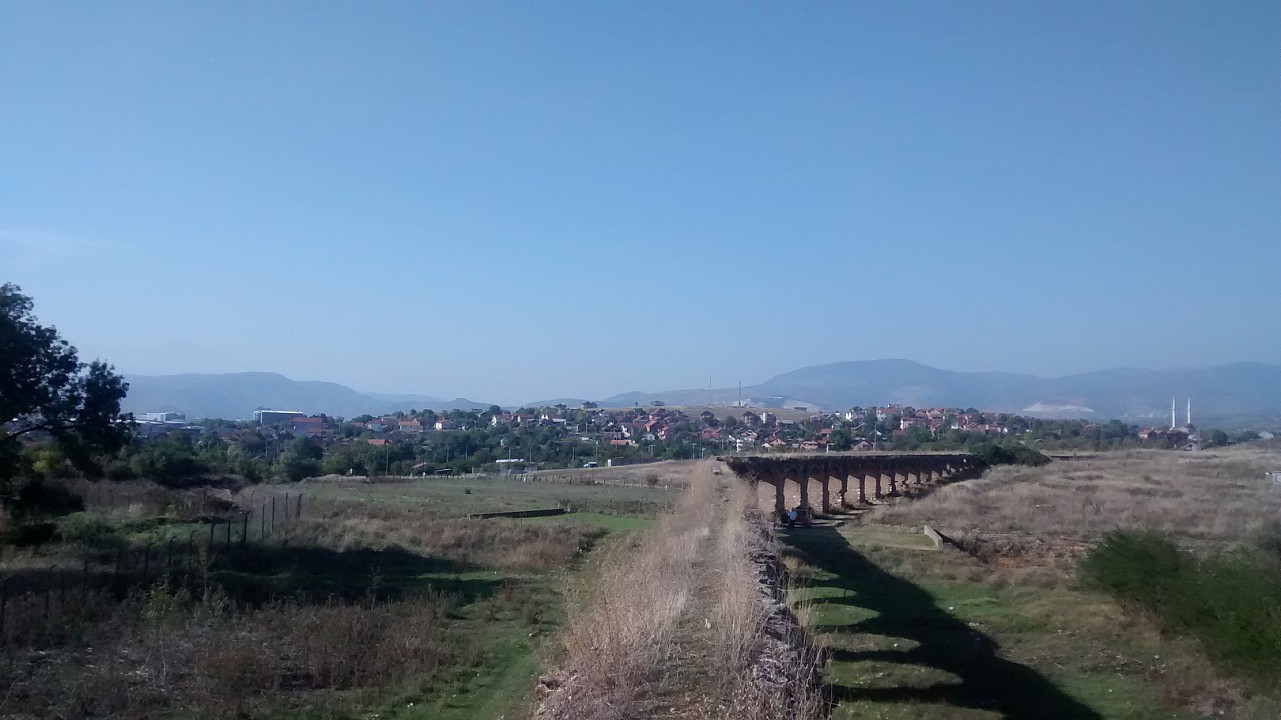This blog post documents my adventures in Macedonia from September 12 to October 12. Eventually, I will publish a post on October 13 to November 13.
On Saturday, September 12, the other YES Abraders and I took a cultural
trip to Matka, a canyon outside of Skopje. The canyon is gorgeous, with cliffs covered with foliage jutting toward the sky from the sides of the artificial lake that fills the canyon. A variety of leisure activities occur in the park. In my time at the park, I saw people lounging in cafes, kayaking
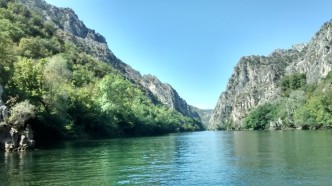
on the lake, hiking in the woods, rock climbing on the cliffs, and even piloting drones. Unfortunately, in a somewhat comical fashion, one of the drones hit a tree and crashed. While at Matka, I also visited the Vrelo caves. Only one of the caves is open to visitors. In a stereotypical cavelike manner, the cave is dark, cold, damp, and serves as a habitat to a plethora of bats. Adjacent to this cave is another cave that lies under the
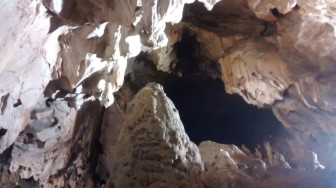
water of the lake. An Italian diver, Luigi Casati, explored that cave last year and could not find the bottom. Luigi reached a depth of 205 meters, which makes the cave the deepest underwater cave in the Balkans. He believes the cave is over five hundred meters deep, which would make it the deepest underwater cave in the world. Additionally, I visited St. Andrew’s Monastery, a small orthodox monastery on the side of the lake.
Fortunately, that same day I had the opportunity to attend my first Macedonian wedding. Macedonian weddings vary considerably from American weddings. The morning of the wedding, the groom’s close family and friends drive him from his house to the bride’s house in a cavalcade of honking cars that attempt to make as much noise as possible. At the bride’s house, there is a short celebration. From the bride’s house, the bride, the groom, and close family travel to a church where the ceremony occurs. In stark contrast to most American weddings, the ceremony typically lasts a grand total of fifteen minutes at most, and only closest family and friends accompany the couple in the church. The ceremony is so quick that those observing the ceremony do not sit. Following the ceremony, the procession goes to the reception, which is where other family and friends join the bride and groom. The reception usually commences around 7:00 in the evening and starts with a presentation of the bride and groom, which is accompanied by drinking champagne. Then there is traditional dancing with a live band, followed by the appetizer, then more traditional dancing followed by dinner. After dinner, there is again traditional dancing. Now, this may come as a shock to anyone who has ever seen me dance, but I have been told candidly my multiple individuals that I can put on a pretty good Macedonian traditional wedding dance. In fact, my Macedonian dancing skills may be just as good as my conga-line, or even my cha-cha slide, dancing skills. Around eleven, a very large piece of meat is presented. At midnight, the cake is brought out and is ceremonially cut by the bride and groom. Shortly after eating the cake is the bouquet toss. Coincidentally, my host sister caught the bouquet at the wedding: this is the fourth time she has caught a bouquet at a wedding, so maybe I will have a host brother-in-law soon. After this, there are no other major events and the wedding continues with traditional dancing into the wee hours of the morning.
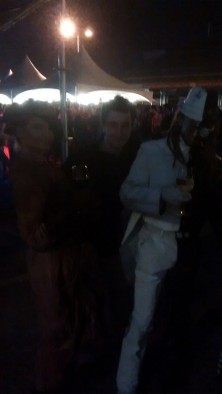
After the wedding, a few weeks passed by with no other major events, until Vino-Skop. Vino-Skop is a Macedonian wine festival from September 30 to October 3. You may imagine a typical wine festival as people sampling a variety of fine wine and cheeses during a quiet afternoon with some light, possibly classical, music accompanying the event. Conversely, Vino-Skop is nearly the opposite of this. Almost everyone attends the festival at night, from 11:00 PM to 3:00 AM. Of course, there is wine, of which I drank none. The music, instead of classical, ranged from rap to turbo-folk, which is a modern twist on traditional Balkan music. I strongly encourage you to check out turbo-folk; you will have a musical epiphany. Remember, it is not good, or bad, just different.
The weekend of Vino-Skop, I took the SAT. The testing experience in Macedonia was almost the same as it was in America. More importantly, after the SAT, I went with one of my fellow YES Abraders and his host family to the Skopje Aqueduct. At a length of over three hundred fifty
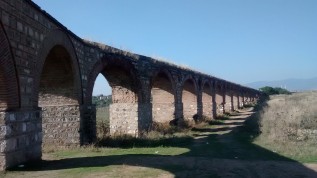
meters, the Skopje Aqueduct is an ancient aqueduct located on the outskirts of Skopje. No one knows exactly who constructed the aqueduct or when they constructed it. The theories range from the Romans building the structure in the first century to provide water to a military outpost, to the Ottomans building it in the sixteenth century to deliver water to Turkish Hammams. For an ancient structure so precious, you may expect that the aqueduct is displayed prominently, well-guarded, and surrounded by tourists. You would be wrong: The road to the aqueduct is not paved, the structure stands an empty field behind a military base, and I did not see another person outside of our party while there. The aqueduct’s aloofness gave rise to a unique opportunity: to walk on top of the aqueduct from one side to the other. Thus, my friend and I embarked on our journey to cross the structure that was most likely older than both of our family trees. Marveling at the views around us, we cleverly planned our steps as we placed each foot on the overgrown weeds that covered the top of the aqueduct. Eventually, our journey came to an end. We felt a
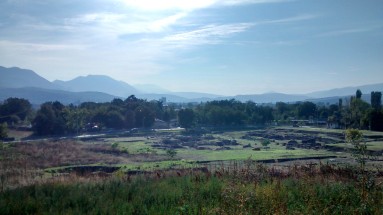
sense of accomplishment that we were probably the first, and will most likely be the only, Americans to cross the aqueduct. We then left the aqueduct to visit an ancient roman settlement and amphitheater. The archeologists at the amphitheater allowed us to roam inside the ancient theatrical hall, and I had the opportunity to sit in an ancient private theater box, reserved for Roman politicians, overlooking the city of Skopje.
That night, October 3, was White Night. White Night is a festival where many of the restaurants, clubs, theaters, and museums are open from when the last of the sun’s glimmer shines over the crests of the mountains in the evening until the first of the sun’s rays cast their presence on Skopje the following morning. I spent my White Night lounging at a café, relaxing to an electronic music group at the Macedonian Youth Cultural Center, and listening to live bands at Vino-Skop. I did not stay out very late for White Night, arriving home at four in the morning and sleeping until two in the afternoon, only to wake up and write a college application essay.
If you enjoyed reading this post and would like to read future posts of mine, please follow my blog by email or WordPress at the bottom of this page and feel free to share my blog.
